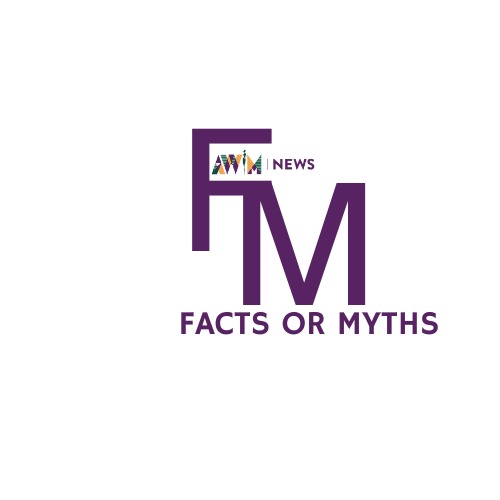Groundbreaking Workshop on AI and Technology-Facilitated Gender-Based Violence at AWiM24
Trending
Friday May 30, 2025
Trending

 Photo Credit: Freepik
Photo Credit: Freepik
Breast cancer originates in the cells of the breast. It is one of the most common cancers affecting women, but also occurs in men at significantly lower rates. It develops when breast cells begin to grow abnormally, often clustering together to form a tumor. If left undetected and untreated, these cancerous cells can spread (metastasize) to other parts of the body.
There are several breast cancer types, including Ductal Carcinoma in Situ, which begins in the milk ducts, and Invasive Ductal Carcinoma, where cancerous cells penetrate the duct wall, invading surrounding tissues and Lobular Carcinoma in Situ, originating in the milk-producing glands.
The risk factors for breast cancer encompass age, family history, genetic mutations such as BRCA1 and BRCA2, hormonal influences, lifestyle factors (including alcohol consumption and obesity), and reproductive factors (like early menstruation or late menopause). Early detection through regular mammograms, self-examination, and clinical screening significantly enhances the likelihood of successful treatment. Treatment options vary depending on the cancer stage and type and may include surgery, radiation therapy, chemotherapy, hormonal therapy, and targeted therapies. Ongoing research aims to enhance breast cancer prevention, diagnosis, and treatment.
Here are some myths and facts about breast cancer checked and verified.
Family history is a factor for breast cancer – True
According to Breastcancer.org: “Most people diagnosed with breast cancer have no known family history”. The common misconception is that breast cancer is an inherited condition. However, only 5–10% of breast cancer cases are thought to be hereditary, which means that aberrant alterations, or mutations, in certain genes that are passed down from parents to children, cause the disease
Since most cases of breast cancer do not have a family history, other variables, such as lifestyle and environment, must be involved.
Similarly, Breast Cancer Research Foundation 2024 states that, “Only about 10 to 15 percent of breast cancers are caused by inherited mutations in genes like BRCA1, BRCA2, and PALB2. It’s true that research has linked certain gene mutations to an increased risk of breast cancer and that having first- or second-degree relatives with breast cancer can also elevate a person’s risk. But most women diagnosed with breast cancer have no known inherited gene mutations or a significant family history.”
Breastcancer.org also notes that: “Doctors often can’t explain why one person gets breast cancer and another doesn’t. The biggest risk factors are simply being a woman and growing older. Over time, healthy breast cells can develop mutations on their own, eventually turning into cancer cells.”
According to Prof. Sanjoy Pal, a Lecturer and Cancer Researcher in the Department of Microbiology at Skyline University Nigeria, people with a history of cancer in their families must be very careful and continuously check their health to ensure they are safe.
Only women can contract breast cancer – False
Breast Cancer Research Foundation 2024 explains that: “Although breast cancer overwhelmingly affects women (310,720 will learn they have the disease this year alone), men can also be diagnosed because they have breast tissue, too. In 2024, an estimated 2,790 men will be diagnosed and 530 will die from the disease. BCRF has supported the largest international study on male breast cancer, which revealed molecular differences in men’s tumors and noted that men tend to be undertreated, leading to worse outcomes.” Men typically do not exhibit symptoms of breast cancer as frequently as women,but they should still be aware that breast cancer is a potential risk. Men should promptly report any unusual changes, such as lumps, inflammation, or other abnormalities, to their doctor as soon as they notice them
In the same vein, Prof. Sanjoy Pal added that men have breasts too and they account for 1% of the global percentage of cancer diseases.
Only older people are diagnosed with breast cancer – False
According to the Breast Cancer Research Foundation 2024, “Breast cancer risk increases with age, with most diagnoses occurring in women over 50. But young women are affected—and troublingly, incidence rates in this group are rising. Over the past five years, breast cancer diagnoses in women under 50 have risen more than two percent each year. This trend has alarmed experts particularly because younger women tend to be diagnosed with more aggressive forms, at later stages, and experience worse outcomes.”
The notion that breast cancer only affects older women persists, but it is a misconception. While the median age at diagnosis is 62, and young diagnoses are rare, alarming trends are emerging. Over the past five years, breast cancer diagnoses in women under 50 have increased by more than 2% annually. According to 2019 statistics, the incidence of breast cancer in younger women remains relatively low (49 per 100,000). However, this upward trend is troubling, especially since women under 40 face a nearly 40% higher mortality risk than those over 40. Currently, breast cancer is the most common cancer among women aged 20-49 in the U.S.
When treatment is over, you are breast cancer-free – False
Professor Pal explains that even after successful treatment, no medical professional can guarantee that cancer tumors won’t recur. This is a harsh reality. Therefore, he emphasizes that recovering patients must adhere to regular follow-up appointments to ensure their health continues to progress.
In a similar view, Breastcancer.org, “People with breast cancer often report that their family and friends expect them to be ready to move on after treatments such as surgery, radiation therapy, and chemotherapy end. In reality, targeted therapies such as Herceptin (chemical name: trastuzumab) may be prescribed for a year or more. Hormonal therapies, such as tamoxifen and aromatase inhibitors, are often prescribed for up to 10 years. If a woman has decided to have her breasts reconstructed, this may require a series of surgeries over several months. And for those with metastatic or stage IV breast cancer, treatment will last for the rest of their lives.”
Additionally, “Even after main treatments are done, people can experience long-term side effects. Some of these side effects can be physical: pain and tightness, fatigue, skin changes, neuropathy (tingling and numbness in the hands and feet), menopausal symptoms, and others, depending on the treatment regimen. Other side effects can be mental and emotional: anxiety, fear of recurrence, and relationship changes, among others. For many people, the effects of the breast cancer experience last for years — or for life, in the case of metastatic breast cancer — but their loved ones just don’t get it.”
The World Health Organization (WHO) has revealed that “Breast cancer caused 670 000 deaths globally in 2022 and it was the most common cancer in women in 157 countries out of 185 in the same year.” Every year, breast cancer continues to claim countless lives, with its impact escalating globally. In 2022, WHO estimated 2.3 million new breast cancer cases and 670,000 deaths worldwide.
There is an urgent need for massive awareness campaigns highlighting the risks of breast cancer and the importance of proper screening. In developing countries like Nigeria, Ghana, and Kenya, such initiatives can significantly curb the disease’s progression, detecting it at an early stage and preventing long-term consequences on patients’ health, finances, and emotional well-being.
We’re not gonna spam. We’ll try at least.

Copyright 2020. African Women In Media
Copyright 2020. African Women In Media
Recent Comments